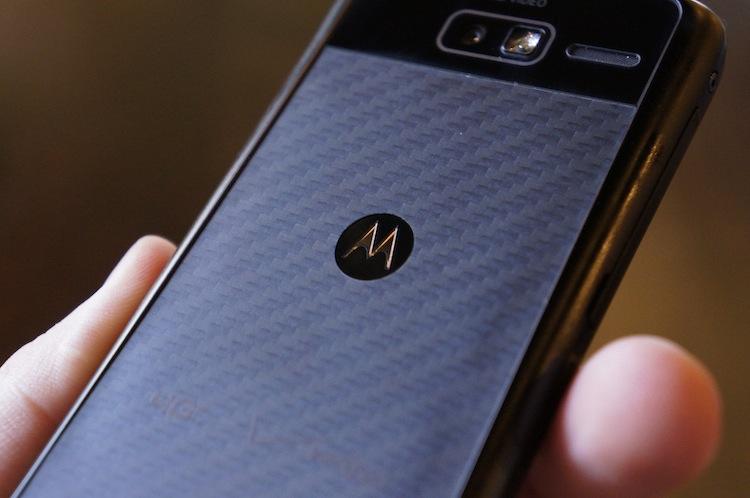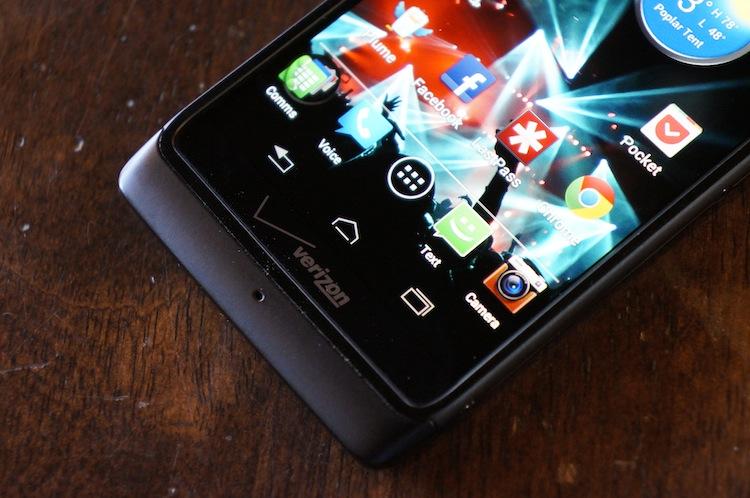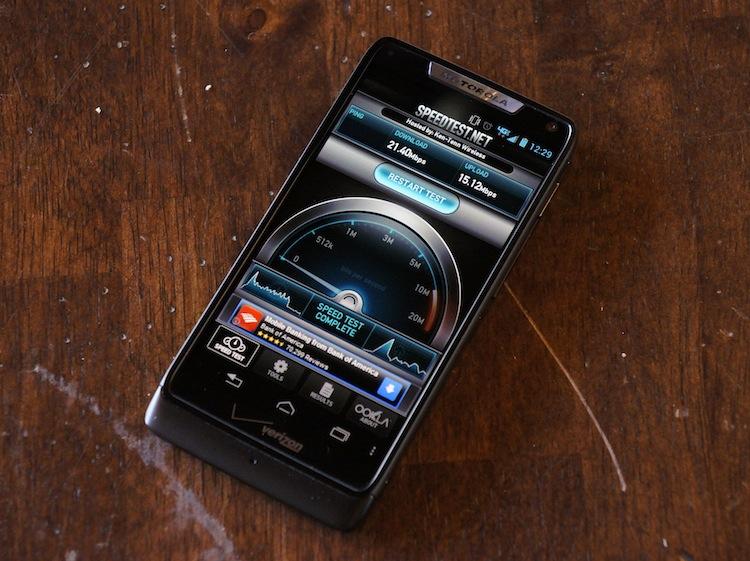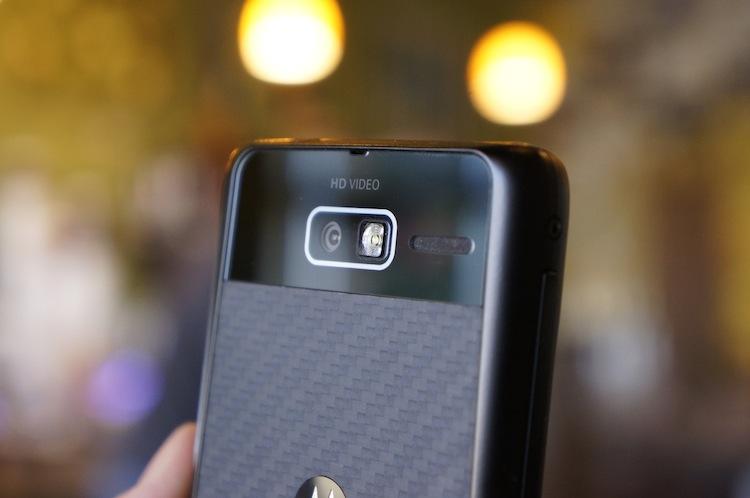
The Motorola DROID RAZR M for Verizon Wireless is a perfect segue into the next generation of smartphones, ones that trade unnecessary bezel for more display space, and it's actually one of the finer devices to pass through our hands here at PhoneDog. With hard lines, brushed aluminum accents and a Kevlar backing, this device is unmistakably part of Motorola's refreshed RAZR brand. It's lightweight, trim and cuts all of the extra bezel to pack as much power into as little space as possible.
Surprisingly, though, this device does not carry the expected hefty price tag. Instead, it is currently priced at $99.99 with a two-year agreement, about $100 less than comparable devices with similar specifications. The question of the hour, however, is should you buy the DROID RAZR M? Or should you spend your coin on the larger RAZR variants, Samsung's latest flagship or even an iPhone?
The Motorola DROID RAZR M has been part of my arsenal of devices for nearly a week now, and below I have shared my findings.
On the outside, the Motorola DROID RAZR M is quite nice. In typical Motorola fashion, the device is stout. Even with an extra firm grip, there is no squeaking of the hardware – it's seriously as solid as it gets. Switching from the Apple iPhone 5, the DROID RAZR M does feel a bit weighty, but not to the point it's overbearing. It's a nice weight that puts off an air of sturdiness and durability.

That said, it's nothing spectacular on the design front. There is a textured metal trim around the outer edge of the face which transitions to a matte finished aluminum on the sides. At the bottom of the face, there is a hole for a microphone. Above that sits the typical Verizon branding, a 4.3-inch "edge-to-edge" qHD Super AMOLED display, a front-facing camera and a speaker grill that is covered by brushed aluminum Motorola branding. (I say "edge-to-edge" because this is Motorola's branding. However, edge-to-edge to consumers means absolutely no bezel, whereas edge-to-edge for Motorola means minimal bezel.)
Along the left edge, a covered port for the micro SIM and micro SD cards is found, along with a micro USB port near the bottom. The top edge houses only a 3.5mm headphone jack, while the right edge holds the brushed aluminum power button near the top and a volume rocker below. Around back is a Kevlar finish, the loud speaker, an 8-megapixel camera and LED flash.
Overall, I only have two gripes as far as design goes. The button placement is awkward. I found it impossible to take screen captures (by holding the power and volume down buttons simultaneously) with one hand. And the aluminum trim around the edge of the face on my unit has started showing wear after just one week of gentle usage. That said, the Motorola DROID RAZR M is a very sturdy handset. Although it's a bit weighty, it feels great in the hand and it even looks nice. The fact that the display is flush against the textured aluminum trim is a very nice touch.

On the software side, Motorola's custom interface is as close to stock Android as you can get without buying a Nexus device. It ships with Android 4.0.4 on board, and it uses most of the stock interface elements with a few additional widgets and wallpapers. Motorola also uses some custom icons and an improved home screen, which utilizes a Quick settings page to the left of the leftmost home screen. By swiping to the right of the far right home screen, you have access to manage home pages by adding, removing or rearranging pages. Another welcomed addition is Motorola's Smart Actions application, which allows users to automate tasks based on a bevy of triggers, such as location, time or battery percentage.
On the software side, I was impressed with the DROID RAZR M. Motorola's interface in the past was easily one of the most overbearing of all. But the most recent versions will appeal to those who prefer a very near stock experience. It took a few days to get used to the changes to the home screens. (I kept swiping left from the default home screen to access some of the things I typically store on the page left of the default home screen only to find Quick settings.) But they have really started to grow on me.
One change some will notice is that the standard Android browser is absent. Instead, Motorola used Chrome for Android as the native browser, which can synchronize tabs and bookmarks across all your Chrome browsers. While Chrome is an option for any Android device running 4.0 and higher, the fact that Motorola has decided to implement Chrome as the native browser is a nice touch.
Inside, the DROID RAZR M holds a 1.5GHz dual-core Krait processor and Adreno 225 GPU, which comes together to make the popular Qualcomm Snapdragon S4 chipset that can be found in many of the market's most popular phones. And, just as with every other S4-powered device, the DROID RAZR M is snappy. Putting it through its paces, I have yet to experience any notable lag outside the typical hiccup through the initial setup process. Even while streaming a movie through the Nexus Q, browsing through YouTube videos, downloading several applications and texting, the device held up surprisingly well in performance.

As most high-end devices are nowadays, the DROID RAZR M has LTE compatibility. Operating on Verizon's snappy LTE network, the DROID RAZR M managed to hit respectable speeds – neither the fastest or slowest Verizon LTE speeds I've come across. The average download speed in a strong LTE coverage area was 22.86Mbps down and 16.45Mbps down.
Of all the components in a smartphone, Motorola is renowned for its radios, and the DROID RAZR M delivers on call quality. With my sister's wedding quickly approaching, I've spent more time on the phone than normal as of late, and I've used the DROID RAZR M to handle the brunt of the calls. The earpiece speaker is extremely crisp and sufficiently loud. There were no complaints with microphone volume on the other end, even in noisier areas. The speakerphone has a bit of a tinny sound and could be a tad louder, but it should suffice in most scenarios.
Unfortunately, the display is a slightly disappointing aspect of the DROID RAZR M. Diagonally, it measures 4.3-inches, though the small form factor of the device itself makes the display appear smaller than it actually is. As far as resolution goes, the 4.3-inch Super AMOLED display is composed of 960 by 540 pixels (qHD), adding up to roughly 256 pixels per inch. The disappointing part is that the subpixel configuration is of the PenTile Matrix family, meaning highly saturated parts of the display will appear quite grainy. And at low brightness, whites and light grays begin to resemble wet newspaper.
Aside from the slight grain (that may actually go unnoticed to an untrained eye), the display is quite nice. Being part of the OLED family, the blacks are extremely inky, and contrast and saturation are considerably high. From arm's length, the display looks great. But any closer and the sore points become more obvious.

The lowest point of the DROID RAZR M is easily the camera. Motorola is not generally commended for great image sensors and the RAZR M is no exception to the rule. In absolutely perfect lighting conditions, the camera can capture a decent picture with fairly balanced colors. But in anything less than perfect lighting, image quality begins to suffer quite a bit. The camera had trouble focusing and exposure is entirely too sensitive. Even in decent lighting, the camera tends to over-expose. But white balance goes awry and hard edges and important details are lost to noise and aberration.
On the software side, the camera is nothing to write home about either. Outside the typical auto-focus, exposure and scenes (Portrait, Landscape, Night Portrait, Sunset or Auto), the only additional features are shooting modes, a handful of filters and the ability to toggle between 8-megapixel and 6-megapixel shots.
Originally, I was upset with the battery life of the DROID RAZR M. With a 2,000mAh battery, I had relatively high hopes for the device's stamina. I took the phone out of the box (after Aaron's stint with the phone, so it wasn't the first charge cycle), charged it fully and used it for a while. The battery plummeted from 100 percent to under 50 percent in just a couple of hours of light use. Yesterday, though, battery life inexplicably took a turn for the better. I took the phone off the charger at about 2:00 PM. After 9 hours and 30 minutes of moderate to heavy use – that's a dozen or so emails, roughly 100 text messages, an hour or so of calls, an hour or more of Web browsing and several hours of standby – the battery sat at 68 percent. Today, after similar usage and 4 hours and 30 minutes, the battery is sitting at 83 percent. Battery life is sufficient but not terribly impressive.

Overall, the DROID RAZR M for Verizon is a great entry from Motorola, particularly for a new style of device where display takes precedence over bezel. It is built quite well and the chassis is as solid as you could possibly want. That said, it isn't a knockout device. The camera is a bit disappointing and the display – at 256ppi – isn't of the same caliber of many other hero devices, which tout 300ppi and beyond.
Still, the Motorola DROID RAZR M is a unique device and it's special thanks to its affordable pricing. For those looking for a smaller device without sacrificing too much in specifications or performance, or those looking for a high class device without breaking the bank, the DROID RAZR M is for you. However, true power users may want to err on the side of the Samsung Galaxy S III, Apple iPhone 5 or the larger siblings of the DROID RAZR M, the DROID RAZR HD or DROID RAZR MAXX HD.
What's Good: Small frame with a relatively large display; decent battery life; affordable subsidized pricing; solid design and build quality; fast wireless speeds; near stock Android experience.
What's Bad: Display is visibly pixelated; poor camera; paint on the outer rim quickly shows signs of wear.
The Verdict: The Motorola DROID RAZR M for Verizon is a surprisingly nice device. It crams a respectable 4.3-inch display in a chassis not much larger than the 4-inch iPhone 5. It's not the phone for pixel junkies or those seeking a nice camera phone, but for just about anyone else – particularly those with smaller hands – the DROID RAZR M is a fine selection. And at $99.99 with a two-year agreement, it's fairly cheap to boot.